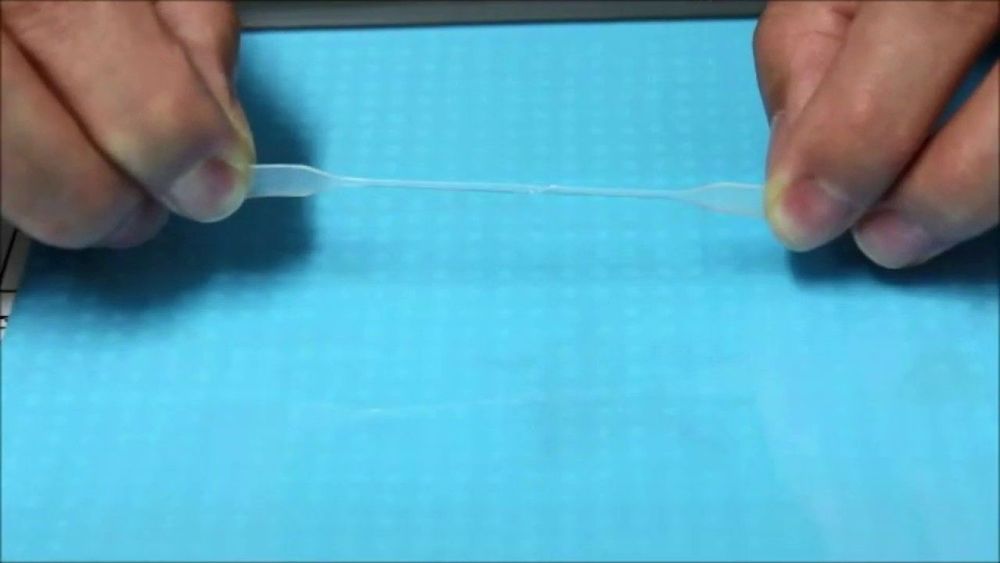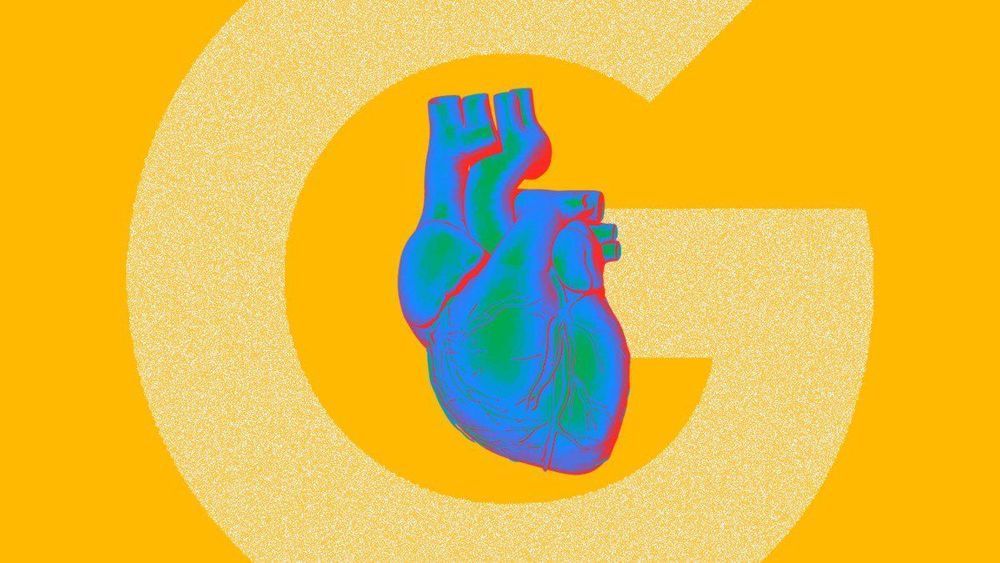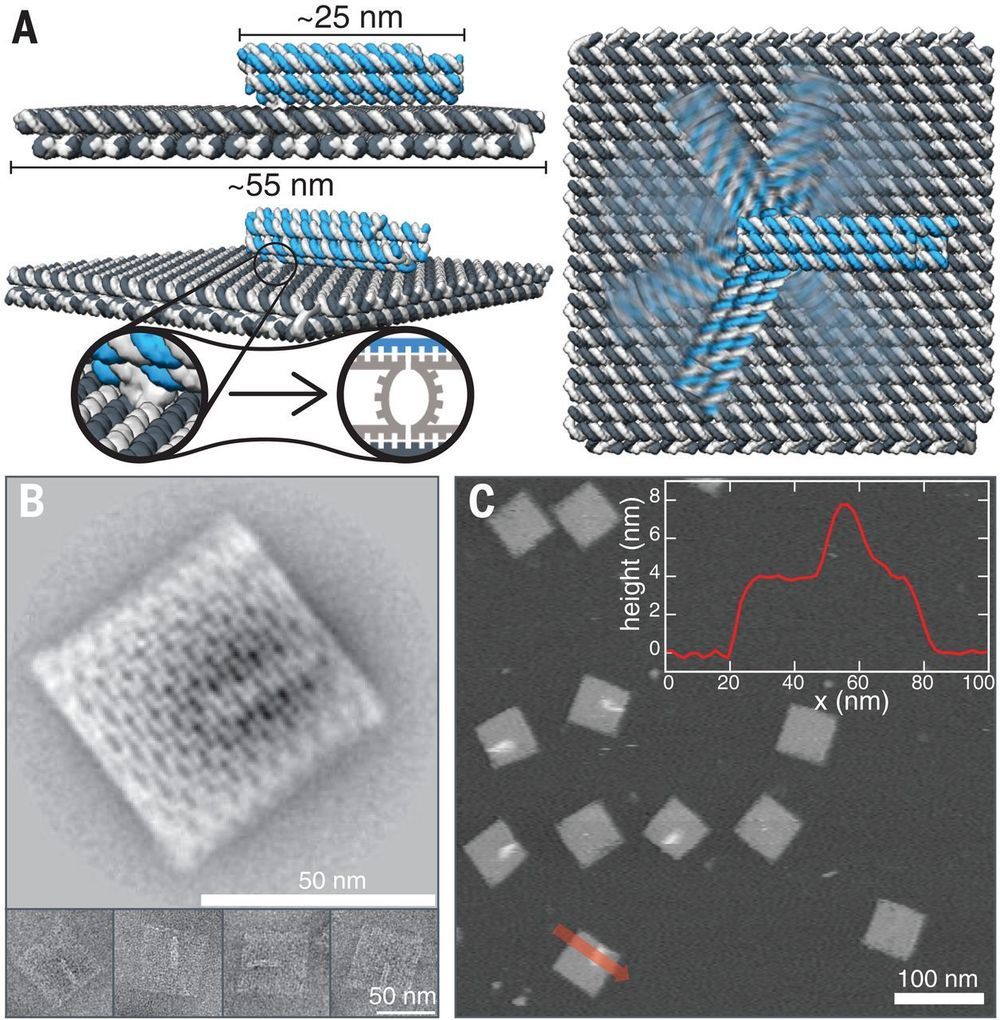Page 7844
Jun 18, 2019
Sensitive scanning technology for low frequency nuclear point mutations in human genomic DNA
Posted by Quinn Sena in categories: biotech/medical, genetics
Knowledge of the kinds and numbers of nuclear point mutations in human tissues is essential to the understanding of the mutation mechanisms underlying genetic diseases. However, nuclear point mutant fractions in normal humans are so low that few methods exist to measure them. We have now developed a means to scan for point mutations in 100 bp nuclear single copy sequences at mutant fractions as low as 10–6.Beginning with about 10 human cells we first enrich for the desired nuclear sequence 10 000-fold from the genomic DNA by sequence-specific hybridization coupled with a biotin–streptavidin capture system. We next enrich for rare mutant sequences 100-fold against the wild-type sequence by wide bore constant denaturant capillary electrophoresis (CDCE). The mutant-enriched sample is subsequently amplified by high fidelity PCR using fluorescein-labeled primers. Amplified mutant sequences are further enriched via two rounds of CDCE coupled with high fidelity PCR. Individual mutants, seen as distinct peaks on CDCE, are then isolated and sequenced. We have tested this approach by measuring N-methyl–N ′-nitro–N-nitrosoguanidine (MNNG)-induced point mutations in a 121 bp sequence of the adenomatous polyposis coli gene (APC) in human lymphoblastoid MT1 cells. Twelve different MNNG-induced GC→AT transitions were reproducibly observed in MNNG-treated cells at mutant fractions between 2 × 10–6 and 9 × 10–6. The sensitivity of this approach was limited by the fidelity of Pfu DNA polymerase, which created 14 different GC→TA transversions at a mutant fraction equivalent to ~10–6 in the original samples. The approach described herein should be general for all DNA sequences suitable for CDCE analysis. Its sensitivity and capacity would permit detection of stem cell mutations in tissue sectors consisting of ~10 cells.
Jun 18, 2019
The Cat From Outer Space (1978) — Trailer
Posted by Quinn Sena in categories: entertainment, space

O.o face_with_colon_three
Movie Trailer for “The Cat From Outer Space” (1978)
Continue reading “The Cat From Outer Space (1978) — Trailer” »
Jun 18, 2019
Medical Benefits of Scorpion Venom
Posted by Paul Battista in category: biotech/medical
Jun 18, 2019
Satellites show 740 square kilometres of rainforest cleared in 30 days
Posted by Fyodor Rouge in category: satellites
The bulldozing of the Amazon rainforest has risen sharply since Brazilian President Jair Bolsonaro came to power.
Jun 18, 2019
Scientists discover new type of self-healing material
Posted by Quinn Sena in categories: materials, robotics/AI

A research group from RIKEN and Kyushu University has developed a new type of material, based on ethylene, which exhibits a number of useful properties such as self-healing and shape memory. Remarkably, some of the materials can spontaneously self-heal even in water or acidic and alkali solutions. The new material is based on ethylene, a compound that is the source of much of the plastic in use today.
Materials that can self-heal have become a popular area of research during the last decade, and a variety of materials have been developed. However, most of the self-healing materials reported to date have relied on sophisticated designs that incorporate chemical mechanisms into polymer networks, such as irreversible or reversible covalent-bond formation, hydrogen bonding, metal-ligand interactions, or ionic interactions. As a result, they require some external stimulus, such as heat or pressure, to prompt them to heal, and in most cases, they do not function in water, acid or alkaline solutions because the chemical networks cannot survive such conditions. The ideal is to create a material that possesses sufficient toughness and can autonomously self-heal under various conditions.
Continue reading “Scientists discover new type of self-healing material” »
Jun 18, 2019
Google backs a bid to use CRISPR to prevent heart disease
Posted by Quinn Sena in categories: bioengineering, biotech/medical, computing, food, genetics, health
Ever wonder why some fortunate people eat chips, don’t exercise, and still don’t get clogged arteries? It could be because they’ve got lucky genes.
Now Alphabet (Google’s parent company) is bankrolling a startup company that plans to use gene editing to spread fortunate DNA variations with “one-time” injections of the gene-editing tool CRISPR.
Heart doctors involved say the DNA-tweaking injections could “confer lifelong protection” against heart disease.
Jun 18, 2019
Humans, Cyborgs, Posthumans: Francesca Ferrando at TEDxSiliconAlley
Posted by Quinn Sena in category: cyborgs
![]()
In the spirit of ideas worth spreading, TEDx is a program of local, self-organized events that bring people together to share a TED-like experience. At a TEDx event, TEDTalks video and live speakers combine to spark deep discussion and connection in a small group. These local, self-organized events are branded TEDx, where x = independently organized TED event. The TED Conference provides general guidance for the TEDx program, but individual TEDx events are self-organized.* (*Subject to certain rules and regulations)
Jun 18, 2019
Captain Marvel’s Powers: Could CRISPR Make Them a Reality?
Posted by Quinn Sena in category: biotech/medical
Captain Marvel is considered one of the top female superheroes of all time by many standards. Learn about her powers, how they work, and explore how sci-fi could become reality if CRISPR genome editing could create superhumans just like Captain Marvel.
Jun 18, 2019
A self-assembled nanoscale robotic arm controlled by electric fields
Posted by Quinn Sena in categories: biotech/medical, nanotechnology, robotics/AI
Most nanoelectromechanical systems are formed by etching inorganic materials such as silicon. Kopperger et al. improved the precision of such machines by synthesizing a 25-nm-long arm defined by a DNA six-helix bundle connected to a 55 nm-by-55 nm DNA origami plate via flexible single-stranded scaffold crossovers (see the Perspective by Hogberg). When placed in a cross-shaped electrophoretic chamber, the arms could be driven at angular frequencies of up to 25 Hz and positioned to within 2.5 nm. The arm could be used to transport fluorophores and inorganic nanoparticles.
Science, this issue p. 296; see also p. 279
The use of dynamic, self-assembled DNA nanostructures in the context of nanorobotics requires fast and reliable actuation mechanisms. We therefore created a 55-nanometer–by–55-nanometer DNA-based molecular platform with an integrated robotic arm of length 25 nanometers, which can be extended to more than 400 nanometers and actuated with externally applied electrical fields. Precise, computer-controlled switching of the arm between arbitrary positions on the platform can be achieved within milliseconds, as demonstrated with single-pair Förster resonance energy transfer experiments and fluorescence microscopy. The arm can be used for electrically driven transport of molecules or nanoparticles over tens of nanometers, which is useful for the control of photonic and plasmonic processes. Application of piconewton forces by the robot arm is demonstrated in force-induced DNA duplex melting experiments.















